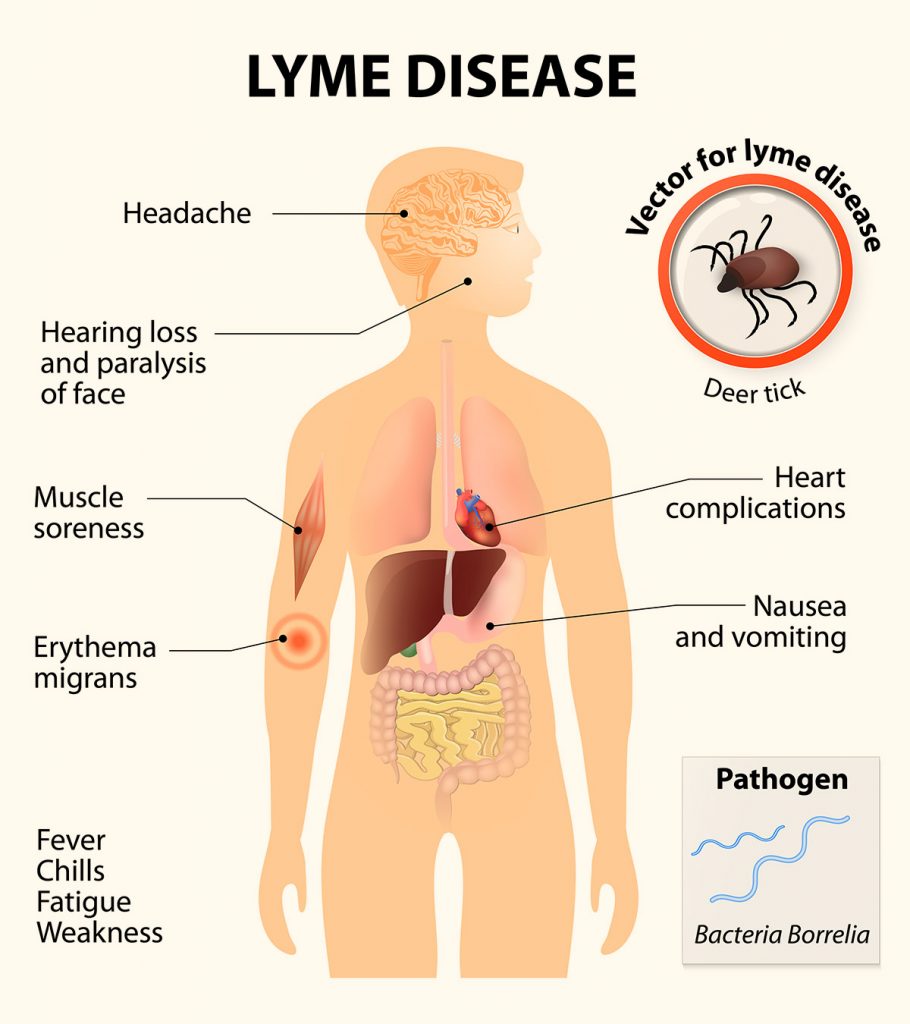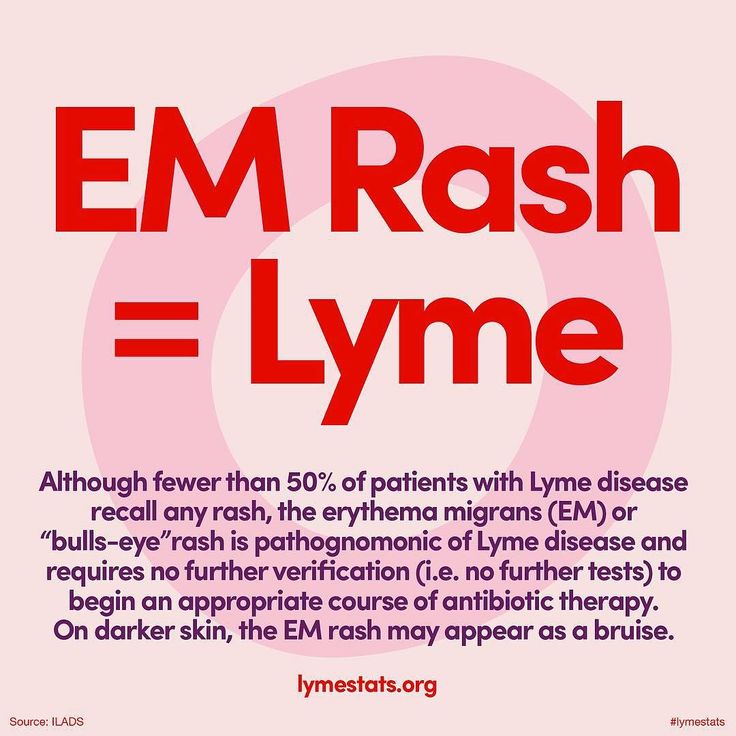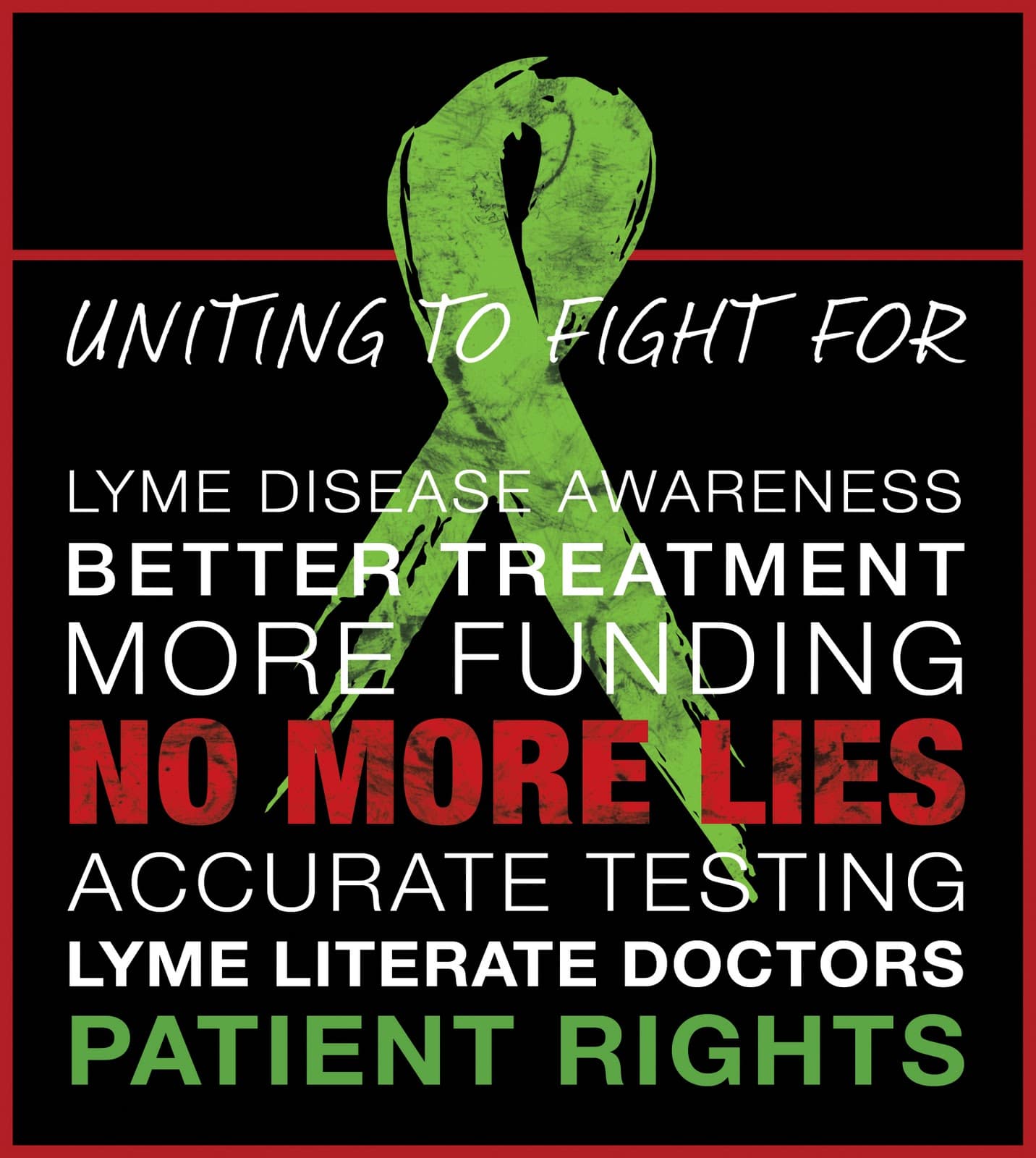What Happens If You Do Not Get Tested For Lyme Disease
Lyme disease does not go away on its own. In fact, it canspread to other parts of your body like your joints, nervous system and heart.
If left untreated, its possible the infection will make your symptoms worse. It may even cause autoimmune issues. Meaning, your own immune system will start working against you, making it difficult to fight off illnesses and diseases.
In conclusion, getting tested is a must. Getting tested by aspecialist who uses multiple, effective testing methods is an even greatermust.
Hopefully your results will come back negative for Lymedisease. But if not, working with a specialist can ensure you receive the righttreatment.
SEARCH
Where To Go To Be Tested For Lyme
You can go to your family doctor for Lyme disease testing. However, not all family doctors are specialists in diagnosing and treating this disorder. They will likely take a blood sample, send it off for testing, then read your results during a follow-up visit. Many leave the follow-up to their nurses.
Lyme disease is a life-altering, serious disease. You need adoctor who will treat it as such and treat you with the care and compassion youneed if you test positive for Lyme disease.
Because Lyme diseases is one of the most commonly misdiagnosed diseases, it is important you choose a Lyme Literate doctor. This is someone who specializes in tick-born illnesses, who knows the entire list of signs and symptoms, and when these symptoms appear during the stages of developing Lyme disease.
You can also contact a Rheumatologist who specializes injoint weakness and pain, one of the most common symptoms of Lyme disease.
Research Lyme Disease Foundations, Clubs and Associations that share lists of qualified doctors. Do a lot of research and ask friends or family members for recommendations. Dont be afraid to interview your doctor or their staff about qualifications, training and other background information related to treating this disorder.
The Role Of Lyme Disease Tests
The purpose of the most common type of Lyme disease testing is to determine whether you have developed antibodies as a result of past exposure to the Borrelia bacteria that cause Lyme disease. Antibodies are proteins created by the immune system that target specific threats like bacteria and viruses.
Blood testing alone cannot determine whether you have Lyme disease. Instead, testing can provide helpful information that your doctor can consider along with other factors, such as any symptoms youve had and whether youve been exposed to ticks that can carry Borrelia, to determine if a diagnosis of Lyme disease is appropriate.
Beyond blood testing, it is possible to analyze fluid from the central nervous system for signs of the Borrelia bacteria.
You May Like: Lyme Academy College Of Fine Arts
The Best Test For Lyme Disease
Lyme disease is a tick-borne illness spread by Lyme borreliaebacteria which includes, but is not limited to, Borrelia burgdorferi sensu stricto. The Centers for Disease Control and Prevention estimate that there are 400,000 cases of Lyme disease annually, making Lyme a serious public health concern that only stands to grow as the spread of ticks affects disease endemicity and seasonality.
One of the biggest challenges of fighting Lyme disease is providing patients with accurate diagnostic tests. Without access to the best tests for Lyme disease, its impossible to diagnose this treatable disease in a timely manner. When the disease isnt caught in time, it can spread throughout the body and cause chronic health problems that could otherwise be avoided with earlier detection and treatment.
Are There Any Risks To Lyme Disease Tests

There is very little risk to having a blood test or a lumbar puncture.
With a blood test, you may have slight pain or bruising at the spot where the needle was put in, but most symptoms go away quickly.
With a CSF test, you may feel a little pinch or pressure when the needle is inserted. After the test, you may feel some pain or tenderness in your back where the needle was inserted.
You may also have some bleeding at the site or get a headache. The headache may last for several hours or up to a week or more, but your provider may suggest treatment to help relieve the pain.
Read Also: Lyme Disease Symptoms Rash Pictures
Is There Anything Else I Need To Know About Lyme Disease Tests
At-home test kits for Lyme disease are available. To do these tests, you usually collect a drop of blood from your finger and send it to a lab for testing. If you want to do an at-home test, it’s important to talk with your provider first. Some at-home tests may use lab methods that aren’t proven to work, so your results may not be accurate.
Who Should Get Testing
Testing is usually indicated if a person has symptoms of Lyme disease and a known or possible exposure to ticks that can carry the Borrelia bacteria. However, because it takes time for antibodies to develop, the timing of testing is important to consider.
Lyme disease symptoms depend on the extent of the bacterial infection. Three phases are used to describe the infection:
It is important to understand these phases because testing is not equally valuable in each stage. With early localized disease and erythema migrans, blood testing is generally not helpful because antibodies have not had enough time to develop.
Because of similar concerns about potential false positive results, random screening for Lyme disease in people without symptoms is not recommended even in areas that are known to have ticks that can carry the Borrelia bacteria.
Read Also: Can You Get Lyme Disease Twice
What Abnormal Results Mean
A positive ELISA result is abnormal. This means antibodies were seen in your blood sample. But, this does not confirm a diagnosis of Lyme disease. A positive ELISA result must be followed up with a Western blot test. Only a positive Western blot test can confirm the diagnosis of Lyme disease.
For many people, the ELISA test remains positive, even after they have been treated for Lyme disease and no longer have symptoms.
A positive ELISA test may also occur with certain diseases not related to Lyme disease, such as rheumatoid arthritis.
How Do They Test For Lyme Disease
Lyme disease is best tested using two different blood testing methods. These are:
- The Enzyme-linked Immunosorbent Assay test: In a nutshell, this test will look for signs that your body is trying to fight off Lyme disease by producing antibodies. However, the ELISA test may come back negative even when a person is infected by the Borrelia burgdorferi bacteria. False-negatives can occur during the early stages of the disease, where the infected persons body has not produced enough antibodies to fight off the B. burgdorferi bacteria. For this reason, reliable diagnosis is not usually based only on the ELISA test results.
- Western Blot test: Heres a simple way to explain the western blot test without getting into all the nitty-gritty details of what it does and how it does it. Put simply, it separates the blood proteins and detects antibodies to the bacteria causing the Lyme disease. Usually, when an ELISA test comes back positive, a western blot test is performed to confirm the diagnosis.
Ideally, the CDC recommends standard two-tier testing to confirm the veracity of the Lyme disease test accuracy. Together, the ELISA and western blot tests are 99.9% accurate.
Recommended Reading: Best Essential Oils For Lyme Disease
Can Lyme Disease Be Prevented
Most people with Lyme disease get the infection during the late spring, summer and early fall when immature ticks are out feeding. In warm climates, few tick bites take place during winter months.
Deer ticks are most often found in wooded areas and nearby grasslands. Theyre especially common where the two areas merge, including neighborhood yards where deer occasionally roam. Ticks dont survive long on sunny lawns. They dry out quickly and die.
Although only about 1% of all deer ticks carry Lyme disease-causing bacteria, there are areas in which over 50% of the ticks carry the bacterium. The diseased ticks are often found in the U.S. Northeast and upper Midwest areas. Ticks also live in coastal areas.
Black-legged ticks can get the infection from animals other than deer. Mice, voles and some squirrels can carry the bacteria.
How can I prevent tick bites?
The following tips can help you avoid tick bites:
How To Get A Tick Tested
Ticks can be tested dead or alive . If you have removed a tick and want to have it tested, you have two options:
- Store it on a damp paper towel or cotton swab in a sealed plastic vial or ziploc bag.
- Securely attach the tick with tape to a piece of paper.
If the tick is already dead, there is no need to keep it moist. DO NOT store the tick in alcohol as it may compromise the test results.
You may choose to save the tick for testing should you begin to experience symptoms, rather than have it tested immediately.
DO note the date and location of the tick bite. If possible you should record:
- Location where tick attached
- Location on body where tick was removed
- Any other details about physical symptoms or location where tick was encountered
Don’t Miss: Testing Ticks For Lyme Disease In Pa
Can Lyme Disease Completely Be Cured
Taking oral antibiotics typically cures Lyme disease after two to four weeks. You may need to get antibiotics through the vein for four more weeks. However, theres no reason to think that Lyme disease stays in you forever after treatment.
A note from Cleveland Clinic
If youre going to spend time in an area that might have ticks, take measures to avoid being bitten. This includes wearing long-sleeved shirts and pants to make it harder for ticks to bite. If you feel sick after being in an area that probably has ticks, make an appointment with your healthcare provider. If your provider prescribes antibiotics, make sure you take all of them as instructed.
Last reviewed by a Cleveland Clinic medical professional on 08/16/2022.
References
Cleveland Clinic is a non-profit academic medical center. Advertising on our site helps support our mission. We do not endorse non-Cleveland Clinic products or services.Policy
Is This Test Right For Me

This test may be right for you if:
- You spent time in an area where Lyme disease is prevalent
- You have been in outdoor areas where ticks live
- You are experiencing symptoms such as rash, fever, chills, headache, fatigue, muscle and joint aches, and swollen lymph nodes
If you are experiencing heart or neurologic symptoms, please seek immediate medical attention.
This test may not be right for you if:
- The tick bite occurred within the past 2 to 3 weeks
- You are not experiencing symptoms
Recommended Reading: Does Lyme Disease Cause Memory Loss
The Signs And Symptoms Of Lyme Disease
17.Feb.2021
Now that brighter mornings and longer evenings are on the horizon, its only natural for us to daydream of the activities we can welcome back into our schedules – including hobbies that allow us to soak up all the great outdoors has to offer.
However, with summer, comes a rise in the number of Lyme disease cases. In fact, according to the Centers for Disease Control and Prevention , Lyme disease is the most common vector-borne disease in the United States, with estimates suggesting around 476,000 people get Lyme disease each year in the U.S . And for those who enjoy the fresh air during these sunnier months, there is a very real risk of coming into contact with the infamous black-legged tick known to reside in grassy, outdoor areas.
Heres what you need to know about Lyme disease, including the signs and symptoms of Lyme disease, the causes, and how you can get tested.
When A Lyme Diagnosis Is Simple
A person who notices a tick bite and gets a bullseye rash will typically get a Lyme disease diagnosis. Treatment can start right away without any testing.
Another straightforward example would be a person who has spent time outdoors in an area where Lyme disease is common. Lets say that person doesnt have a bullseye rash but has other possible symptoms of Lyme disease. Their doctor does a standard two-step blood test, and both are positive. In this case the person gets a Lyme disease diagnosis and starts treatment.
You May Like: Can Ticks Give You Lyme Disease
How Will Pregnancy Affect Treatment For Lyme Disease
Early treatment of Lyme disease during pregnancy is important. Thats because if Lyme disease is untreated, it can affect the placenta. According to the CDC , the transmission of Lyme disease from mother to fetus is possible, though rare.
For pregnant people, treatment includes a round of antibiotics. Certain treatments for Lyme disease may not be used, as they can affect the fetus. If you suspect that you have Lyme disease, talk with a healthcare professional immediately.
What Causes Lyme Disease
Lyme disease is caused by bacteria that is spread to humans by tick bites. The ticks that carry the spirochete are:
-
Black-legged deer tick
-
Western black-legged tick
Ticks prefer to live in wooded areas, low-growing grasslands, and yards. Not all ticks carry the Lyme disease bacteria. Depending on the location, anywhere from less than 1% to more than 50% of the ticks are infected with it.
While most tick bites are harmless, several species can cause life-threatening diseases. Tick-borne diseases include:
-
Rocky Mountain spotted fever
Also Check: How To Cure Lyme Disease Naturally
Recommended Reading: What Is The Best Antibiotic To Treat Lyme Disease
When To Get A Tick Tested
You should strongly consider having your tick tested if:
- The tick was attached to your body, not simply crawling around
- You live in or have visited a place where there are infected ticks
Lyme disease has been reported in 49 US states and 65 countries around the world. Infected ticks have been found in 42 of 58 California counties. See here for a CDC map showing geographic reporting of Lyme disease.
In addition, tick testing may be especially important if there is skepticism about the presence of Lyme disease in your community.
If you are showing symptoms call your doctor immediately. Take the tick with you and ask your doctor about a tick test. Keep in mind that symptoms may take weeks or longer to appear. It may also take several weeks to get back the results of a tick test.
Note: tick testing is not a substitute for clinical diagnosis. Tick testing provides information about whether and/or what pathogens the tick may be carrying and about potential risk to the individual bitten by the tick, but it is not an assessment of human infection. You should consult your doctor for medical advice or treatment.
Is It Possible For Cats To Get Lyme Disease Keep Your Cat Safe
If you are a pet owner, you have likely heard stories about dogs getting Lyme disease. Humans can get it, which can make many people wonder if their cats can get it too. Unfortunately, the short answer is yes. Your cat can get Lyme disease, though it isnt as common as it is for dogs. Keep reading as we discuss Lyme disease and how your cat can get it.
Recommended Reading: Chance Of Lyme Disease From Deer Tick
Submission And Collection Notes
If European Lyme disease testing is required: enter ‘European Lyme disease’ under Test Description of the General Test Requisition Form and provide travel history including location of travel and dates.
European Lyme is referred to the National Microbiology Laboratory in Winnipeg.
Indicate the following on the General Test Requisition Form:
How Soon Should You Get Treated For Lyme Disease

If you are bitten by a tick but don’t get sick or get a rash, you don’t need antibiotics. Early-stage Lyme disease responds very well to treatment. In most cases, taking an antibiotic for 2 to 4 weeks kills the bacteria and clears up the infection. Your doctor will tell you how long to take the antibiotic.
Don’t Miss: How Does Lyme Disease Affect The Brain
What Would You Do Next
What Are Alternative Diagnostic Testing Approaches
Patients with EM who live in or have traveled to areas endemic for Lyme disease can be diagnosed clinically without testing. For all other patientsthose with atypical early disease or signs of disseminated infectionlaboratory testing is necessary. Testing patients with low epidemiologic risk is generally not useful, but if pursued, clinicians must recognize the high likelihood of false positives.
Using EIA or immunoblot alone is insufficient for diagnosing Lyme disease because of reduced specificity and potential for false positives.3
Polymerase chain reaction assay of blood has low sensitivity because of the short duration of spirochetemia. PCR of synovial fluid or skin biopsy samples may be useful in certain clinical situations if specimens are available.3
Laboratory-developed tests for Lyme disease are offered by some commercial laboratories claiming to specialize in Lyme disease testing. These nonstandardized tests lack adequate clinical validation and FDA clearance and are not recommended.10
Recommended Reading: Best Treatment For Lyme Disease